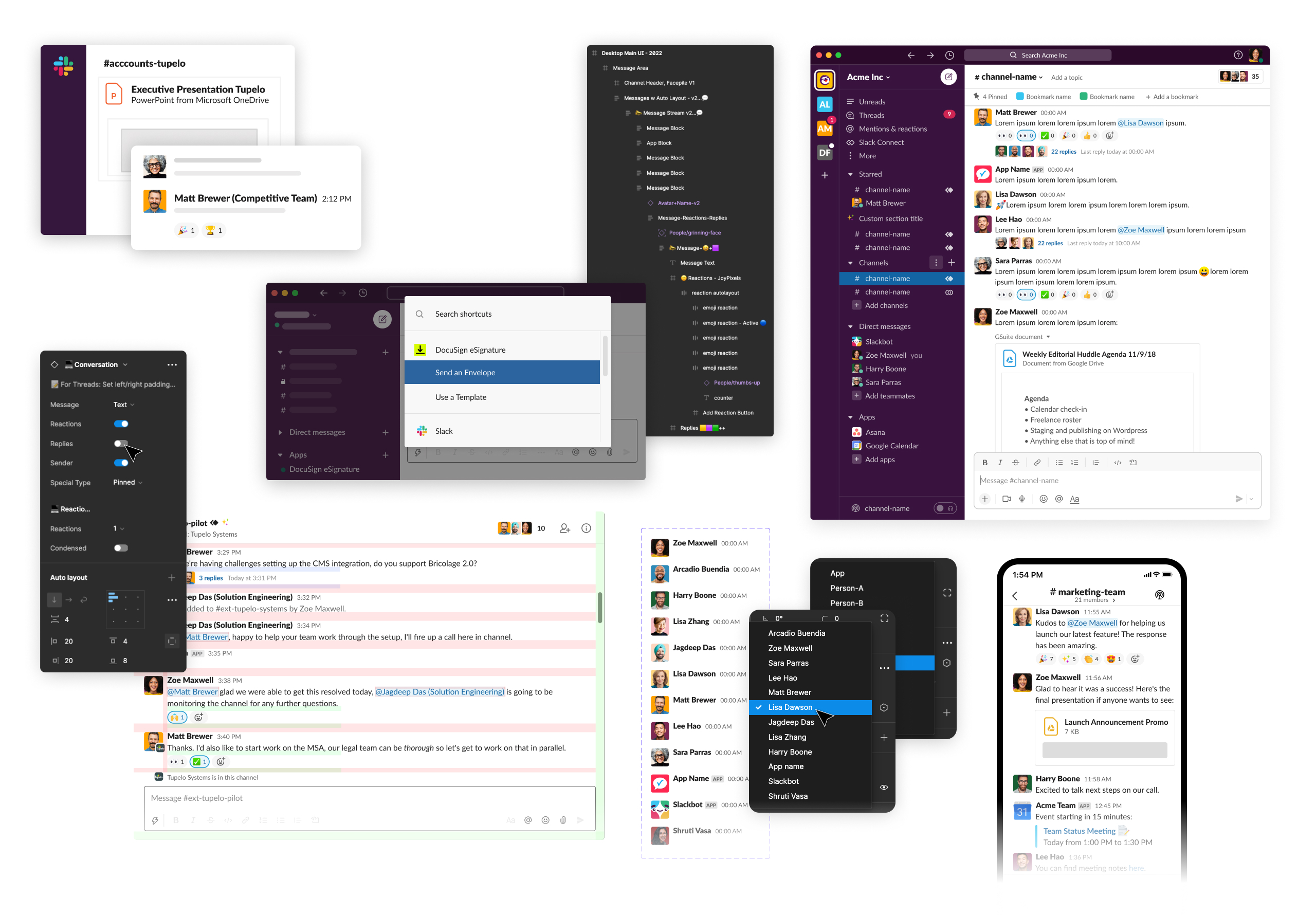Our evolution into a Figma agency began way back in 2019, with some simple requests from Slack to recreate some existing UI abstractions.
As the project progressed, the client started supplying Figma files, though they often lacked libraries and components. So we began developing our own libraries and components. Initially, we relied on Layout Grids for consistent spacing until Auto Layout was introduced, which we promptly integrated into components. With the release of Variants, we updated our components to utilize this feature. Now Slack has a fully streamlined toolkit for abstracted product UI production.
All of this is to say Figma is still young and evolving quickly—but this is nothing new for us. We’ve been keeping pace with that evolution to meet our clients’ emerging needs for more than five years.




